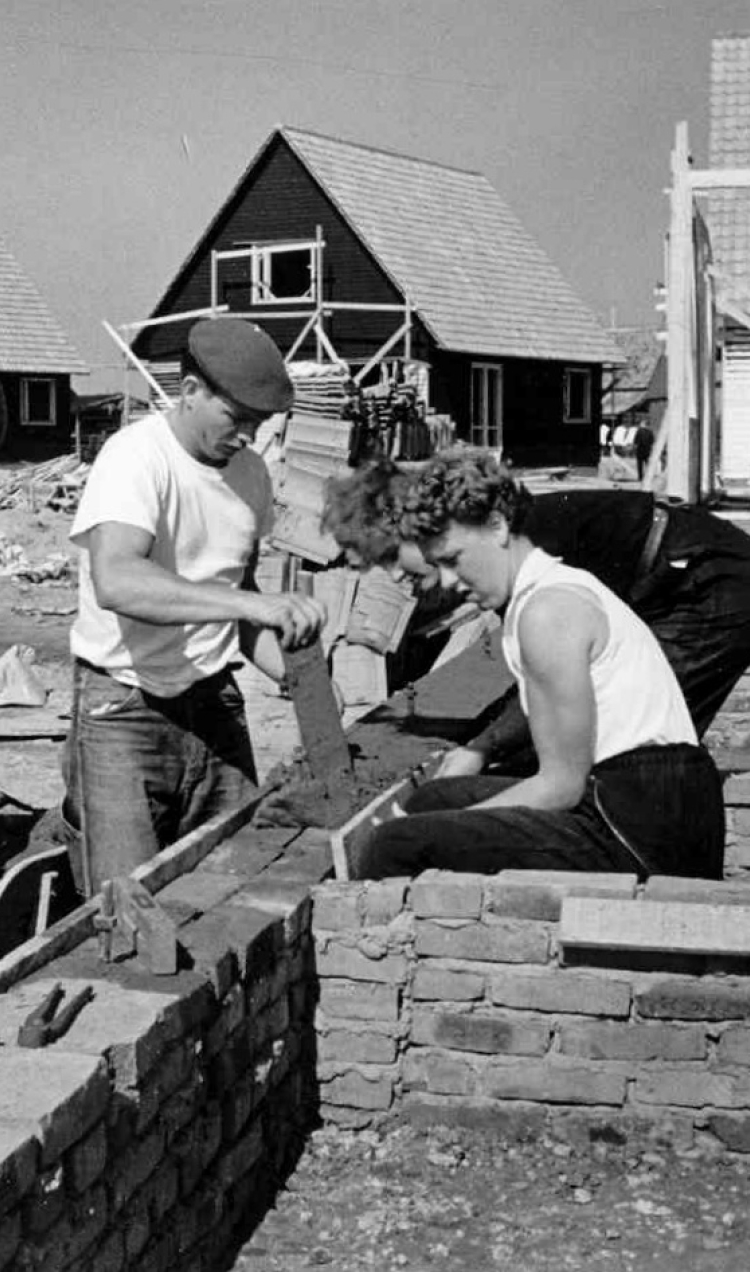Without a Home
72,000 people were left without a roof over their heads after the 1953 flood. Where did they go?

On the Run
During the night of the disaster, people fled to higher ground. They were briefly sheltered in churches and schools before being transported by bus or ship to safer areas.

The First Refugees
On the Monday following the disaster, the first refugees arrive in Rotterdam and Dordrecht, disoriented as they walk along the quay. Many are temporarily housed in Ahoy and the Feijenoord Stadium. At the peak, there are 13,113 refugees in Rotterdam.
People are provided with food, drinks, and a place to sleep. However, most prefer to return to the disaster area. They want to search for missing persons or see if their homes are still standing.
Homesickness
From the shelters, refugees are placed with host families. They struggle to adjust, as some have never left their island before. They miss their families and familiar surroundings.
Not Everyone Wants to Leave
Some people refuse to evacuate. In Zierikzee, residents stay behind because they fear theft. The damage is also not uniform everywhere. What would you do? Stay or leave?
"As long as I can still live here, I won't abandon my belongings. There's so much theft going on. They'll have to drag me out."

Others are asked if they can stay. Often, the men remain behind to assist in the disaster-stricken areas.
What do people who stay to help do?
Yet, it’s not only about sadness. People help each other and make new friends. With some, they remain friends for the rest of their lives.

A Gift of a Home
After a long wait, the first people are allowed to return home. Not everyone has a house to go back to, so some receive a wooden gift house.
